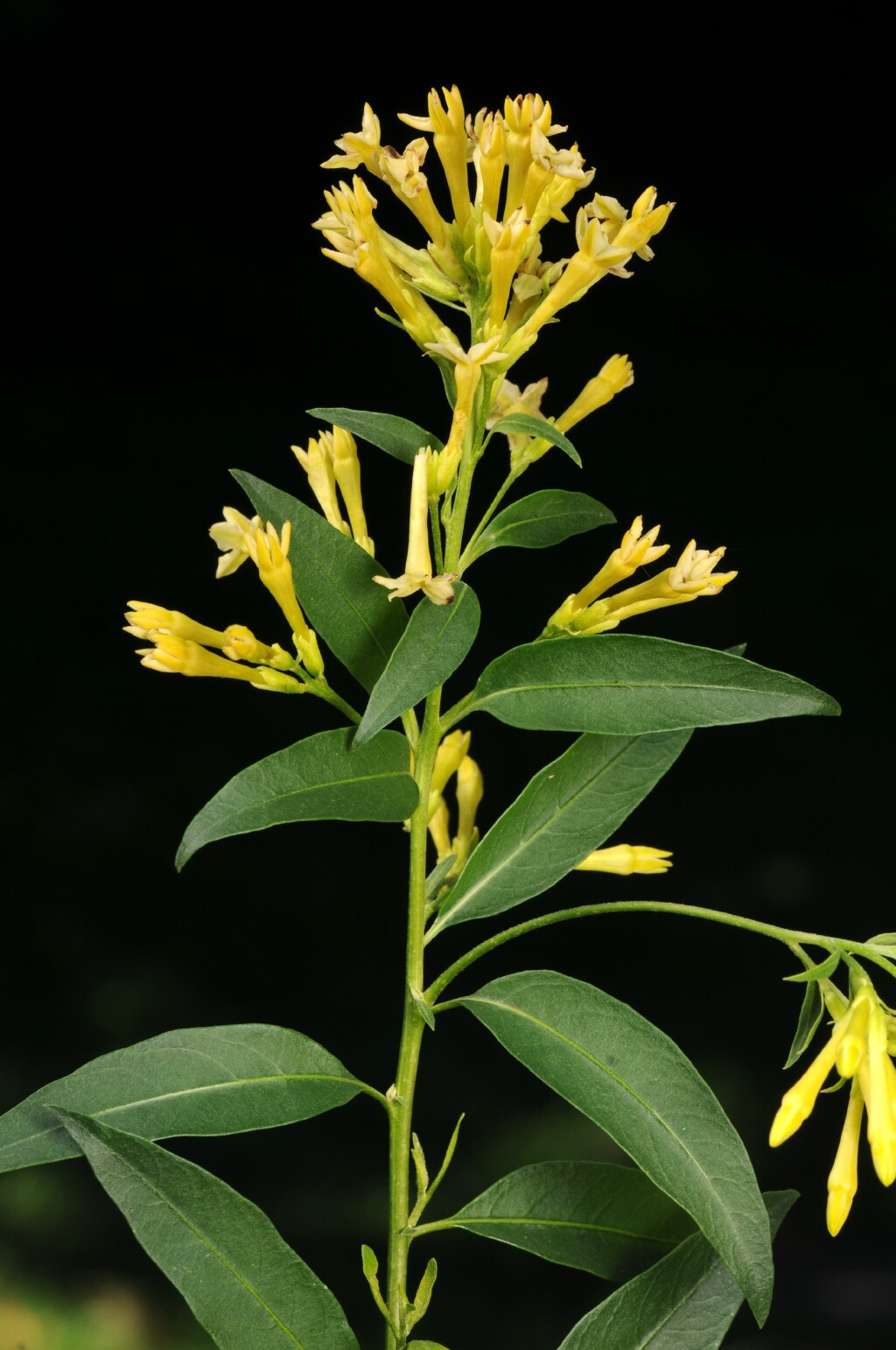Cestrum parqui
L’Hér. Green Poison-berryMalodorous shrub to 3 m high, new growth and leaf-axils minutely pubescent or glabrescent. Leaves narrow-elliptic to lanceolate, mostly 2–7 cm long, 1–3 cm wide, glabrous, apex acute to acuminate, base attenuate, margins more or less entire; petiole to 10 mm long. Inflorescence terminal, congested, panicle-like. Flowers sessile or with pedicels to 10 mm long; calyx tubular, 3–6 mm long, lobes acute, 1–2 mm long; corolla 18–25 mm long, greenish-yellow, tube 1–1.5 mm diam. at base, 3–4 mm diam. at apex, lobes lanceo-late, 3.5–7 mm long, hairy outside, expanding in the evening; stamens inserted near middle of tube; filaments 6–7 mm long; style 17–18 mm long. Berry more or less ovoid, 8–15 mm long, black; seeds c. 10, angular, 3–5 mm long, dark brown. Flowers mainly spring–autumn.
VVP, VRiv, GipP, CVU, NIS, EGL, EGU, HSF, VAlp. Also naturalised WA, SA, Qld, NSW. Native to South America. Widely cultivated as a garden plant and occasionally naturalised in Victoria where declared a noxious weed.
Jeanes, J.A. (1999). Solanaceae. In: Walsh, N.G.; Entwisle, T.J., Flora of Victoria Vol. 4, Cornaceae to Asteraceae, pp. 332–365. Inkata Press, Melbourne.
 Spinning
Spinning




